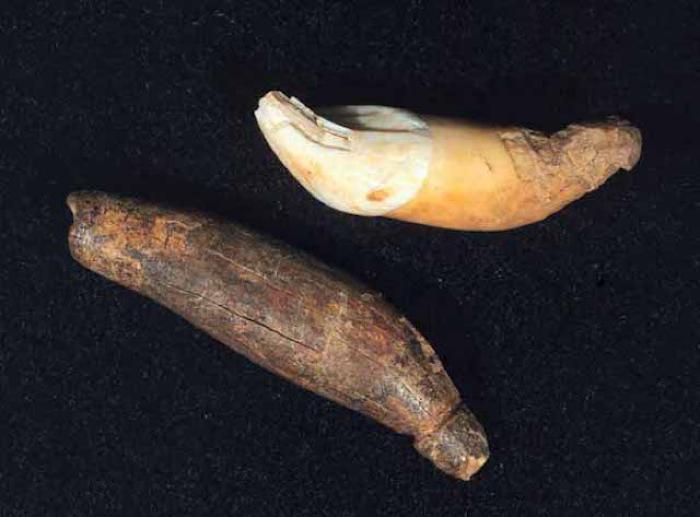Tooth — Guuteq

You can tell a lot about a person from their teeth. Genetic factors like race and environmental conditions like diet influence the shape and condition of people’s dentition.
For example, anthropologists note that people of Native American descent, including Alutiiq people, frequently have shovel-shaped upper incisors. Their front cutting teeth have curved inner edges that form a unique shovel-like depression in the back of each tooth. This is distinct from the blade-shaped incisors found in European and African populations and suggests ancestral ties to Asian peoples who share the shoveling trait.
Enamel, the hard outer coating on teeth, can record a person’s health during childhood. Periods of malnutrition or severe illness can retard the development of tooth enamel, creating striations around teeth. Enamel defects occur in prehistoric teeth from Kodiak, suggesting that children occasionally suffered physiological stress. Anthropologists suspect that spring food shortages caused by bad weather and exhausted stores were the source.
A person’s age is also reflected in their teeth. As you chew, your teeth rub together, flattening the cusps, or ridges, crowning your molars. As people age, therefore, their teeth show more wear. The rate of tooth wear also depends on a person’s diet. Today, teeth wear relatively slowly. In prehistoric times, however, when food was prepared without the many conveniences of modern kitchens, there was more grit in the diet and teeth wore more rapidly. Plant foods and shellfish are among the foods that likely introduced grit to the prehistoric Alutiiq diet and caused tool tooth wear. As well, people often used their jaws and teeth as tools, causing wear and damage.
